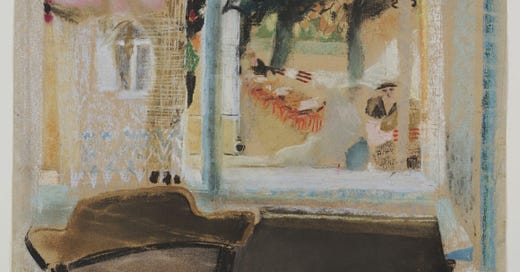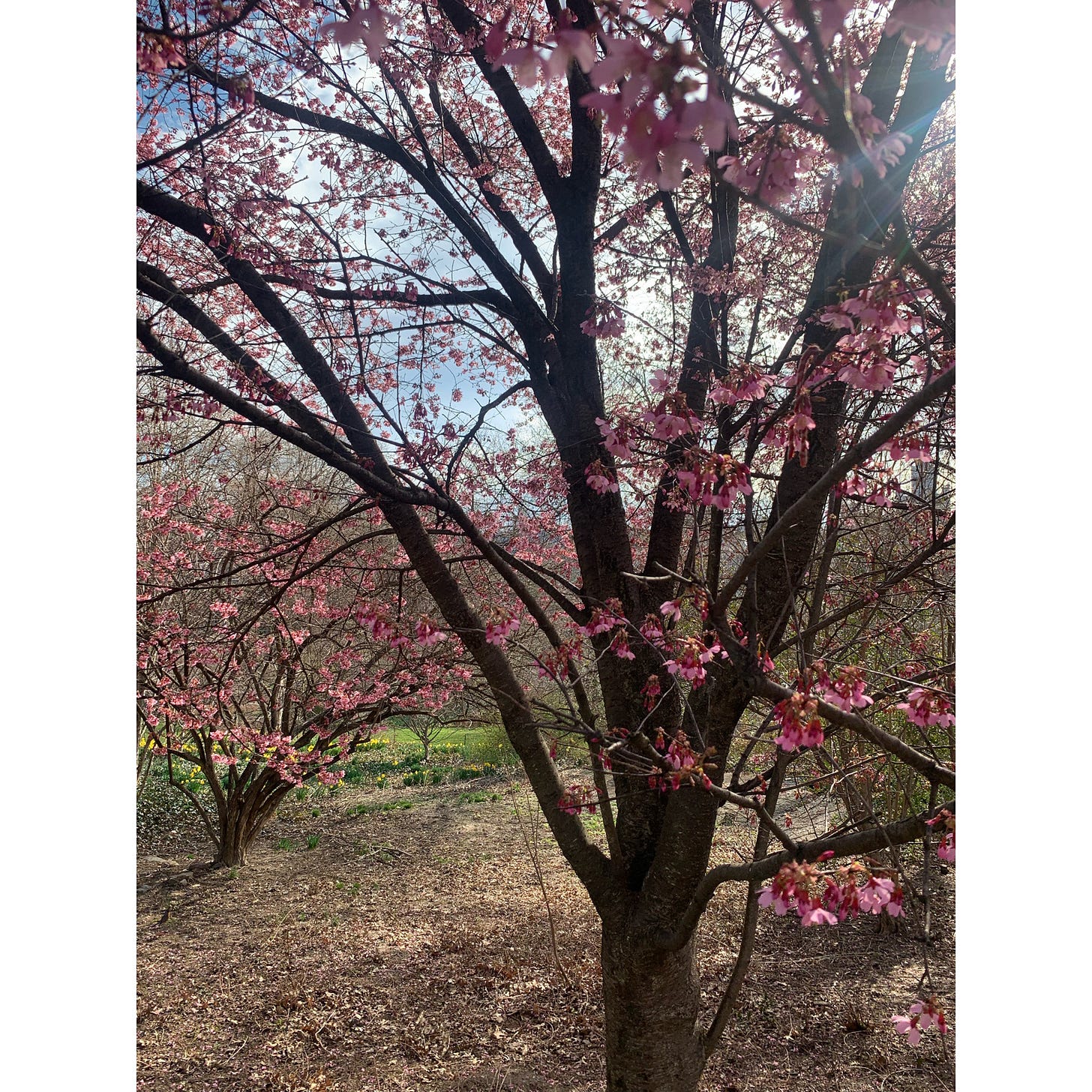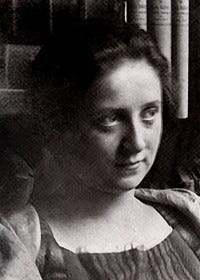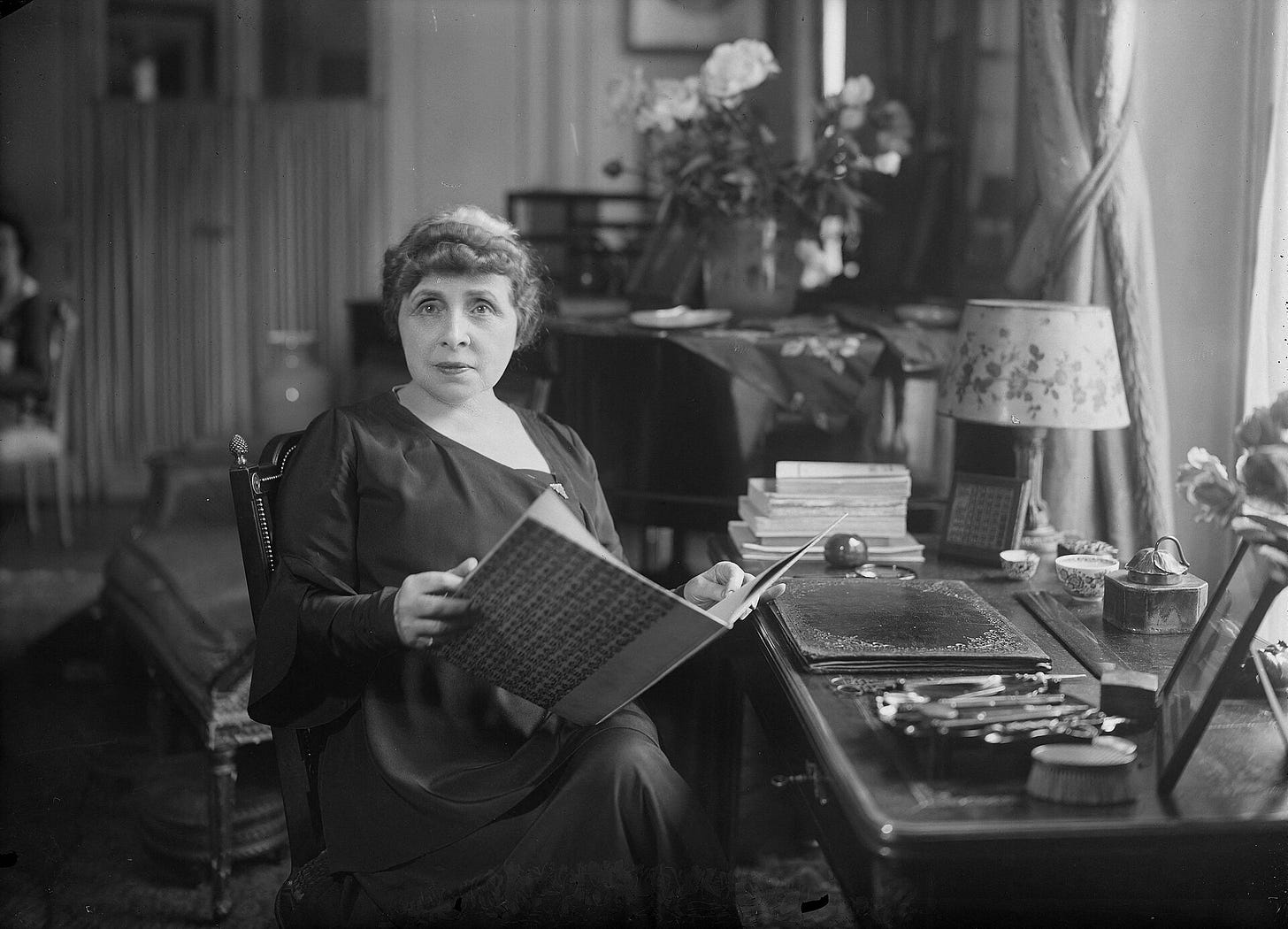Oh nightingale, I wish to send to you The springtime breeze with soft scents of flowers, In order that they show you the way over To our meadows, -- we have been waiting so long already! - the text from the first of Egon Wellesz’s Kirschblütenlieder, written for Emmy Heim, translated from a Japanese poem by Ki no Tomonori (b. 845- d. 905)
On this rainy Saturday, I’m thinking about cool ladies of the past I would’ve liked to meet. Specifically, a few women who inspired some of my favourite works of art, yet find themselves forgotten by history.
I have a vested interest in this topic, as my doctorate focuses around Emmy Heim (b. Vienna 1885, d. Toronto 1954), a mezzo-soprano who helped in the creation and premieres of many art songs by composers ranging from Arnold Schönberg to Egon Wellesz. I’ve written about Emmy for a few publications (see Art Song Canada’s Autumn 2023 issue for a taste) and recently spoke about her on the Sparks and Wiry Cries podcast, if you’d like to give it a listen. Peek the lithograph of her by the great Expressionist artist Oskar Kokoschka, now housed at the Metropolitan Museum of Art!
Those who saw the recent Oscar-winning movie The Brutalist might be curious to hear about Emmy’s second husband, Franz Singer, about whom the movie could have also been made (rather than the fictional Hungarian architect the filmmakers invented…). Singer was a Bauhaus-trained architect, who along with his architectural partner Friedl Singer, helped create formative designs during the Red Vienna period. All three of these artists were of Jewish background. Emmy and Franz luckily made it to England when the Nazis invaded Austria, with Emmy eventually settling in Canada after the war. Friedl Dicker was not so lucky. She died in Auschwitz after spending years in the Theresienstadt concentration camp, where she helped the young children interned there to process their trauma through painting and art lessons. Composers including Stefan Wolpe and Viktor Ullmann wrote beautiful pieces dedicated to her, which I recently performed in a recital dedicated to Dicker.

One of these songs is Viktor Ullmann’s “Wendla im Garten,” which he wrote for Friedl Dicker when they were both students in Vienna. When they reunited in the Terezin concentration camp, Ullmann re-wrote out the song for her, adding a dedication asking if they were not the same then as they had been all those years before.
Venturing away from my doctoral research, another interesting Canadian woman who helped shape a great work of art was Éva Gauthier (b. Ottawa 1885, d. New York 1958). One of the first real classical-crossover artists, the adventurous Éva Gauthier presented controversial recitals in New York City that included works by contemporary classical composers like Ravel and Stravinsky as well as works inspired by Indigenous Balinese traditions and *gasp* JAZZ. Paul Whiteman, a band leader attending Gauthier’s recital accompanied by the young unknown George Gershwin in which she featured some of his works, was so impressed by Gershwin that he commissioned him to compose a jazz-inspired piece for piano and orchestra. Anyone ever seen Fantasia? ;)
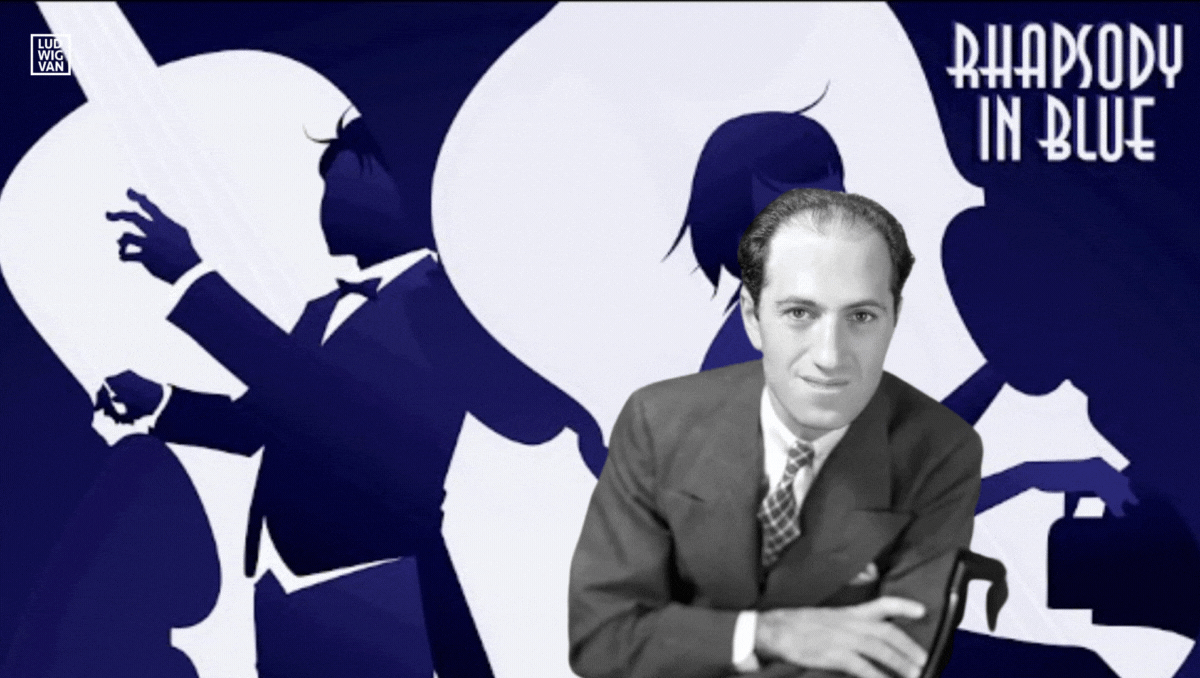
Another woman of the past who intrigues me but whose story I’ve yet to really delve into is Emma Bardac (1862-1934). Bardac (née Moyse) was at different times in her life the romantic partner of Claude Debussy and Gabriel Fauré (two of my all-time favourite composers). Emma was of Jewish descent and a reportedly wonderful singer. She had two children with her first husband—Sigismond Bardac, whom she married at age 17— and one with Debussy named Claude-Emma, for whom Debussy wrote his Children’s Corner Suite. Fauré composed La bonne chanson for Bardac, which is certainly worth a listen with its gorgeous Verlaine poetry.
Well perhaps that’s enough music history for today! In keeping with the Books and Breakfasts theme, I will also add that I’m reading a delicious book called Loved and Missed by Susan Boyt that I heartily recommend.
I also recently made Hawaiian Mochiko, a delicious treat my friend Georgia got me into years ago using glutinous rice flour (can be purchased at most Asian grocery stores), lots of butter, sugar, condensed or coconut milk, regular milk and vanilla (and mine had shredded coconut on top). Highly recommend baking, recipe from The Kitchn below:
Ingredients:
Unsalted butter or vegetable oil, for coating the pan
1 stick (8 tablespoons) unsalted butter
1 pound mochiko flour (also known as sweet or glutinous rice flour)
2 cups granulated sugar
2 teaspoons baking powder
1/2 teaspoon kosher salt
2 cups milk, any fat percentage (I used oat milk as it’s what I had on hand!)
4 large eggs
2 teaspoons vanilla extract
1 (about 13.5-ounce) can unsweetened coconut milk (could also use condensed milk if you’re not a coconut person!!)
1/2 cup unsweetened shredded coconut (optional)
A few pinches of flaky salt (optional)
Heat the oven and prepare the pan. Arrange a rack in the middle of the oven and heat the oven to 350°F. Coat a 9×13-inch baking pan with butter or oil. Melt the butter in the microwave or on the stovetop.
Prepare the dry and wet ingredients. Place the mochiko, sugar, baking powder, and kosher salt in a large bowl and whisk to combine. Place milk, eggs, and vanilla extract in a medium bowl and whisk to combine.
Combine the dry and wet ingredients. Pour the wet ingredients into the dry ingredients and, with a wooden spoon, stir until well combined. Add the melted butter and coconut milk and mix until fully incorporated and smooth.
Pour into the baking pan and top with coconut. Pour the mixture into the prepared pan and rap the pan on the counter a couple of times to bring any air bubbles up to the surface. Evenly sprinkle the shredded coconut on top of the mixture.
Bake. Bake until the mochi is set and golden brown on top, 60 to 70 minutes.
Cool before cutting and serving. Set the pan on a wire rack and let cool completely, about 1 hour. Slice into 20 servings.

